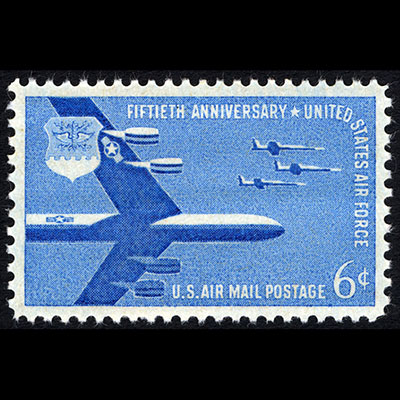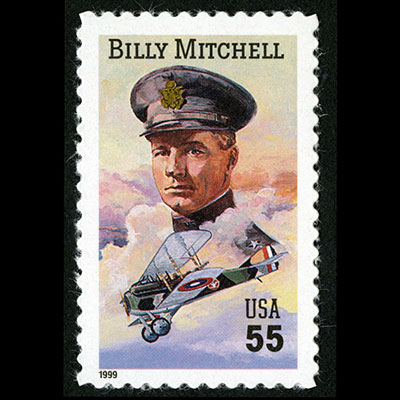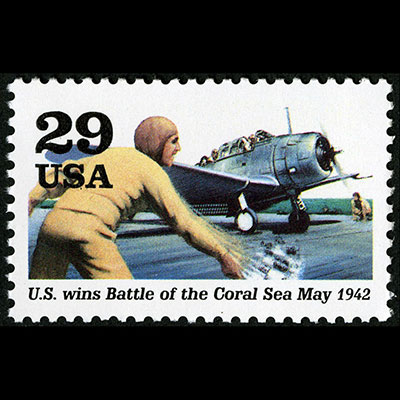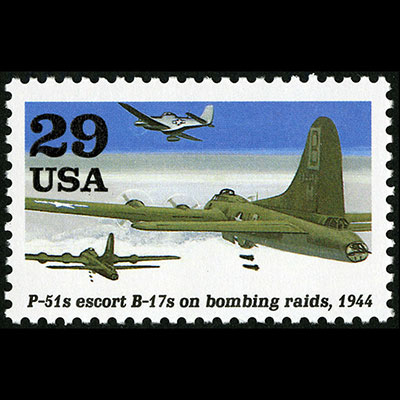
Until 1947, there was no separate United States Air Force. The Army, the Navy, and the Marine Corps took an early interest in aviation, with the Army establishing an Aeronautical Division within its Signal Corps in 1907, the Navy assigning its first officer to aviation in 1910, and the first Marine pilots reporting in 1912. During World War II, as modern military aviation came of age, the army’s aviation units were formed into the greatly expanded Army Air Forces. The Navy and Marines continued their own aviation efforts, with aircraft carriers playing an especially important role.
Most of U.S. military aviation postage stamps deal with subjects from before 1947, so the great majority are associated with Army aviation units. A number of other U.S. stamps tell the story of Air Force and naval aviation, however, from the famous jets of the Air Force Thunderbirds and such classic naval aircraft as the Grumman F4F Wildcat and the Vought F4U Corsair.
Air Force
Because the United States Air Force was formally established in 1947, long after the start of U.S. military aviation, there have been two different “50th anniversary” Air Force stamps, issued 40 years apart. In 1957, a postage stamp was issued to mark the 50th anniversary of the Air Force, dating back to the establishment of the Aeronautical Division of the Army Signal Corps. Forty years later, in 1997, a new 50th anniversary stamp was issued, this one commemorating the founding of the separate United States Air Force in 1947.

Army
During the Civil War, the Union Army had a Balloon Corps from 1861 to 1863, using gas-filled balloons primarily for reconnaissance and observation; a smaller number of balloons were created and used by the Confederate Army.
Since then, aviation has been the responsibility of a series of different Army units. The first home of U.S. Army aviation was in the Aeronautical Division of the Signal Corps, established in 1907 and replaced in mid-1914 by the Aviation Section. In the latter months of World War I, this in turn was replaced by the Army Air Service. The Army Air Service lasted until 1926, when it was renamed the Army Air Corps. With the approach of World War II, the corps was replaced by the greatly expanded Army Air Forces. It was not until July 1947 that a separate United States Air Force was established as a separate branch of the U.S. armed services.
Navy and Marine Corps
The United States has an active tradition of naval aviation dating back to 1910, and both Navy and Marine pilots have a long heritage in combat. Naval aviation was the subject of a U.S. postage stamp in 1961, and individual Navy and Marine aircraft have been honored with their own stamps in recent years. The vital role of aircraft carriers during World War II was celebrated in 1992 by a stamp illustrating the 1942 Battle of the Coral Sea, a crucial early battle in the fight for the Pacific.








